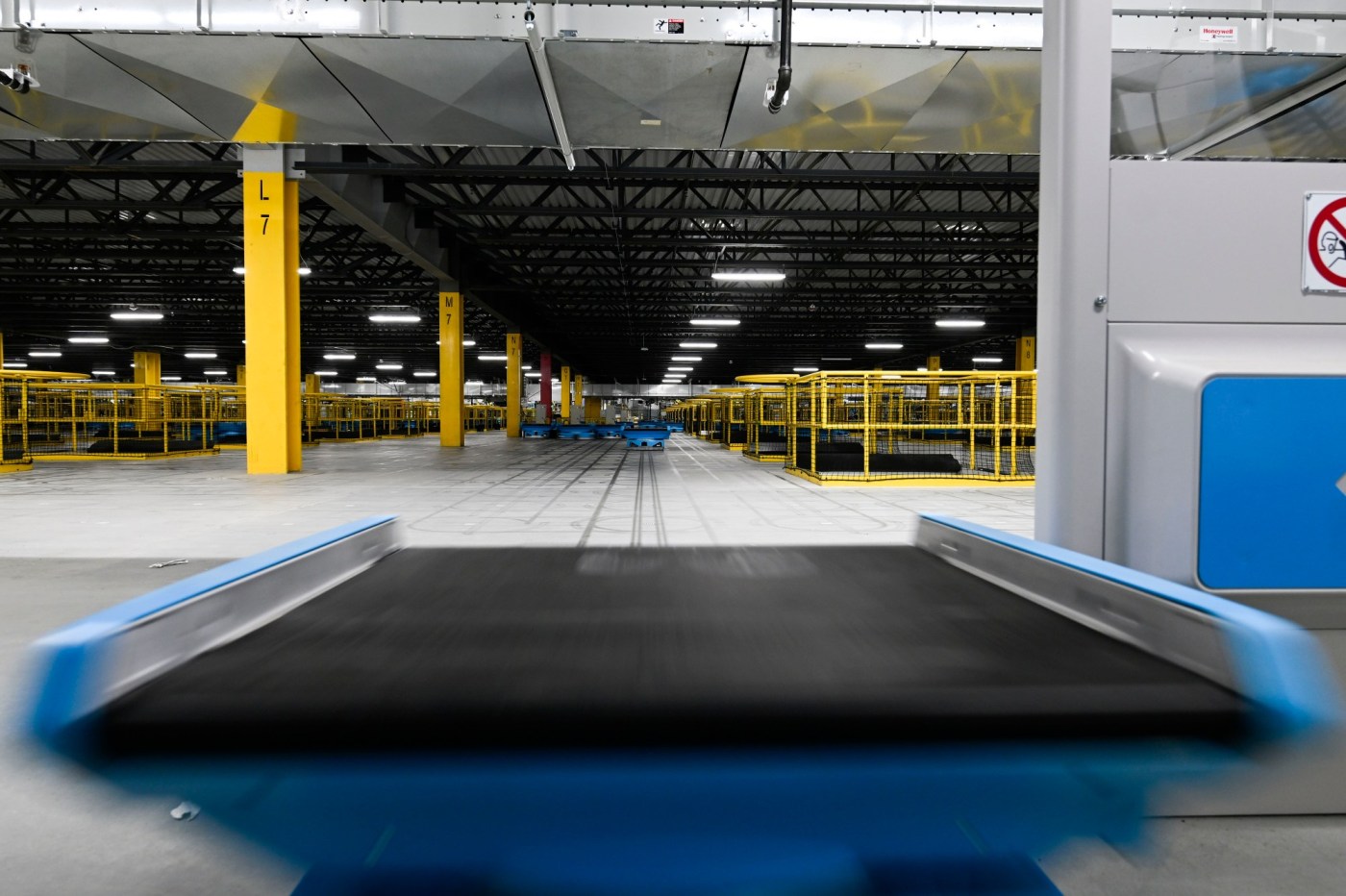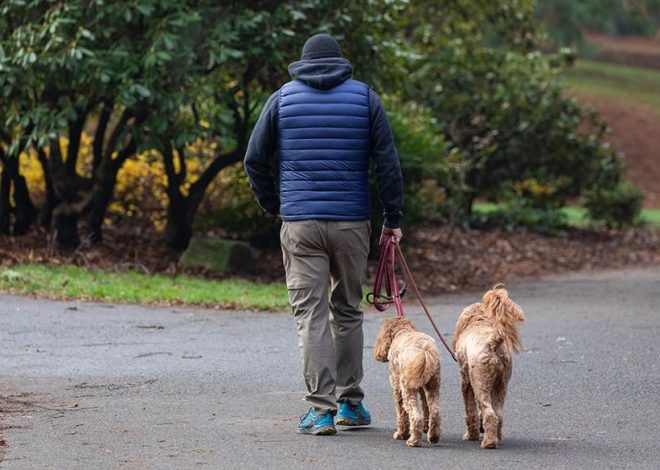
Amazon’s largest U.S. warehouse is in this California city
In a region accustomed to Amazon’s smiling arrow logo, the scale of the online retailer’s latest warehouse stands out.
At six stories and roughly 4.5 million square feet, the Robotics Sortable Fulfillment Center in Ontario is Amazon’s largest U.S. facility.
A ribbon-cutting ceremony for the warehouse, which launched operations in July, took place Tuesday, Oct. 1, with performances by the marching band and dance team from Ontario’s Oaks Middle School.
RELATED: Bill separating new California warehouses from neighborhoods signed into law
Besides its size, the Baker Avenue complex, neighbored by other warehouses and tract homes, is special for another reason — more than 7,000 of them, to be exact.
That’s how many robots help the warehouse’s 2,000-plus human workforce process as many as 1 million shipments a day quickly and efficiently.
With names like Robin, Pegasus and Hercules, the robots aren’t here to replace workers, but to make their lives easier, said David Koneck, warehouse general manager.
“If you look at Amazon just 10 (or) 12 years ago when I started, we’ve added hundreds of thousands of jobs since then,” Koneck said. “I look at a facility like this compared to the facility where I came from — we have the exact same number of jobs. However, we’re providing more opportunities for our employees who come through here.”
Amazon eventually plans to hire another 1,000 people at the warehouse, Koneck added.
The warehouse, which can hold up to 50 million items — 30 million are three now — receives, unpacks, packs and sends out a wide range of consumer goods to points locally, nationwide and worldwide.
With state-of-the-art robots, Amazon wants to make an efficient process geared toward delivering goods within a day or even a few hours even more lean and mean. Even packaging is scrutinized, with robotics moving orders along a conveyor belt and packing them in the most efficient manner possible.
REALTED: EPA OKs California rule to slash pollution from warehouse-bound trucks
“We want to reduce our transportation costs,” Koneck said. “The more trucks we have on the road, it’s bad for traffic. It’s bad for the environment. So we want to make sure that we get our packages compressed so that we run as environmentally sustainable an operation as we can.”
As with Amazon’s San Bernardino air hub, Robins — yellow robotic arms — take packages from conveyor belts and place them onto drives, or Roomba-like flatbed scooters. The package-laden drives move along floors with embedded barcodes telling them where to go and stop at charging stations when their batteries run low.
Robots also ease employee workloads, Koneck said. In many instances, machinery moves bins and does the heavy lifting so humans don’t have to.
Robots also deliver goods to the workers.
“Say you want a bottle of shampoo and some dog treats (at the grocery store),” Koneck said. “You’ve got to go to the shampoo (aisle) and you have to hike over to the dog treat aisle and grab those dog treats.”
“Here, I can put anything anywhere, which means (the robots will) bring (the goods) directly to us and I can pull both out right away. That’s part of the speed and assistance ability that helps our associates so that they don’t have to hike all over to get different items.”
He added: “If you go back to a traditional warehouse style, to do the same amount of work that our associates do, they would have to walk between 12 and 15 miles a day to accomplish that. Our associates don’t have to do that.”
Robots pull towering bins full of goods in cubby holes up to workers, who with the help of a camera and spotlight find goods to put in different bins that are whisked away by automation.
Related Articles
Amazon’s audit found ‘perceptions’ of racial inequity in its warehouses
Amazon demands a lot from its drivers. Now they’re pushing back
Amazon launches Project Amelia, an AI assistant for third-party sellers
Amazon boosts warehouse worker pay by $1.50 to $22 hourly
Future of Google search rests with judge who will strip away monopoly power
Workers can even make a game of it, competing against themselves or each other through video games at their stations that turn sorting items into virtual adventures.
The logistics industry and its massive Inland Empire presence provoke strong feelings among residents.
While the sector is a major employer and economic backbone, it’s also blamed for contributing to the region’s poor air quality through diesel exhaust from warehouse-bound trucks and lowering the standard of living with substandard wages and harsh working conditions.
At Tuesday’s ribbon cutting, Ontario Mayor Paul Leon compared the new warehouse’s cleanliness and amenities — there’s a lactation booth for nursing mothers, for example — to the dingy, dusty conditions he endured as a grocery warehouse worker in the late 1970s.
“This is not your father’s or grandfather’s warehouse,” Leon said. “This is the warehouse of today and the future and this is the warehouse that gives you that right-now delivery.”


